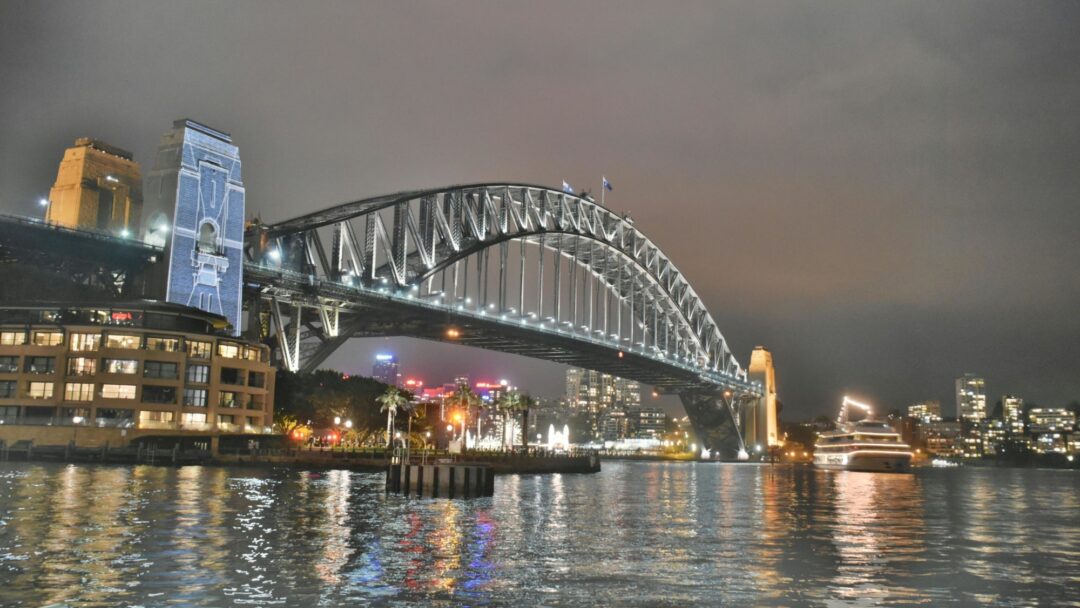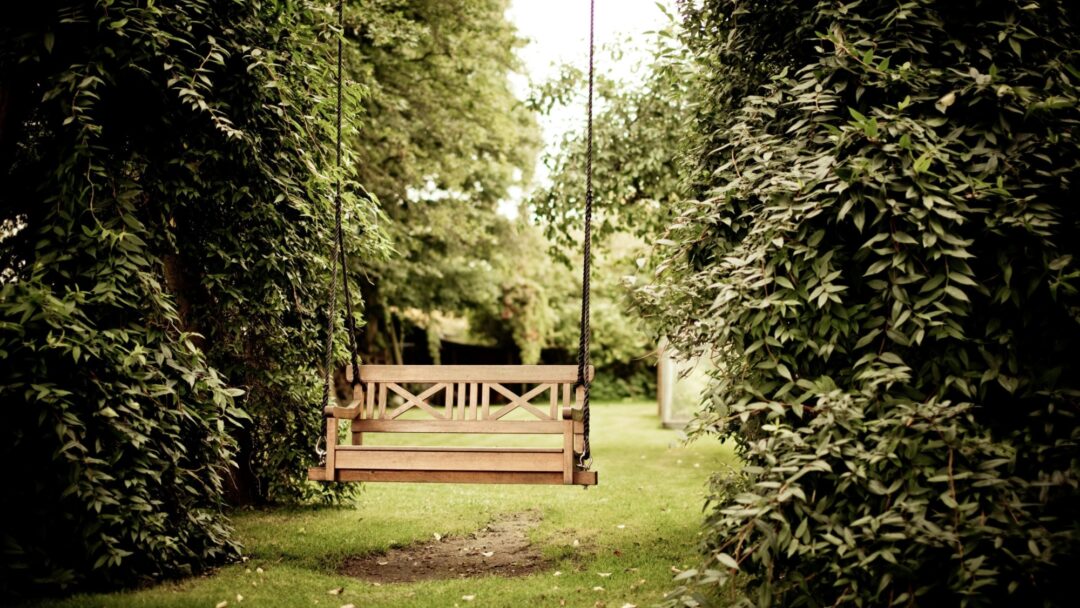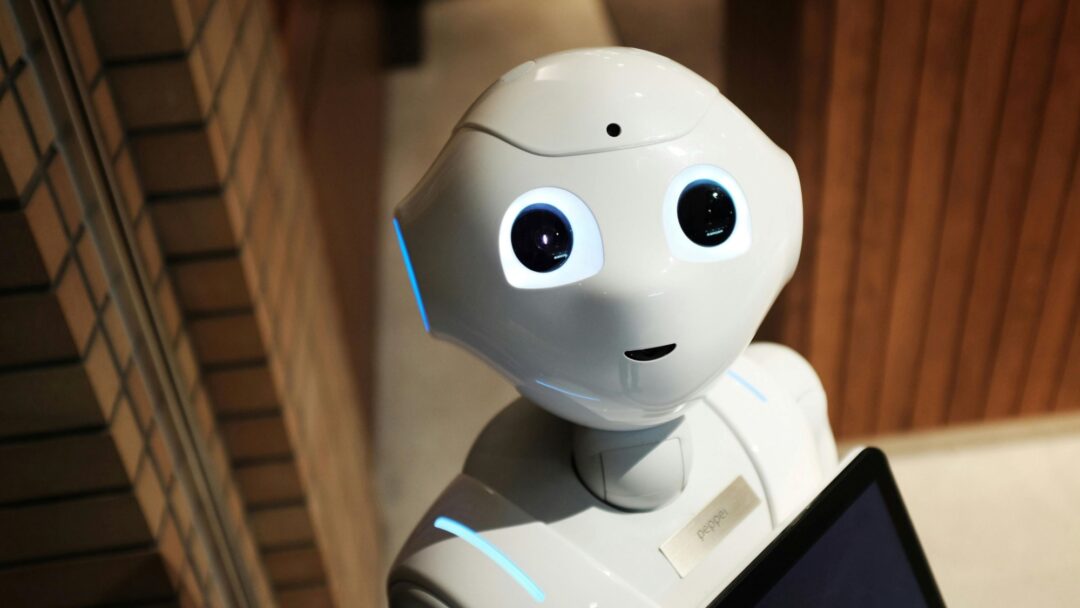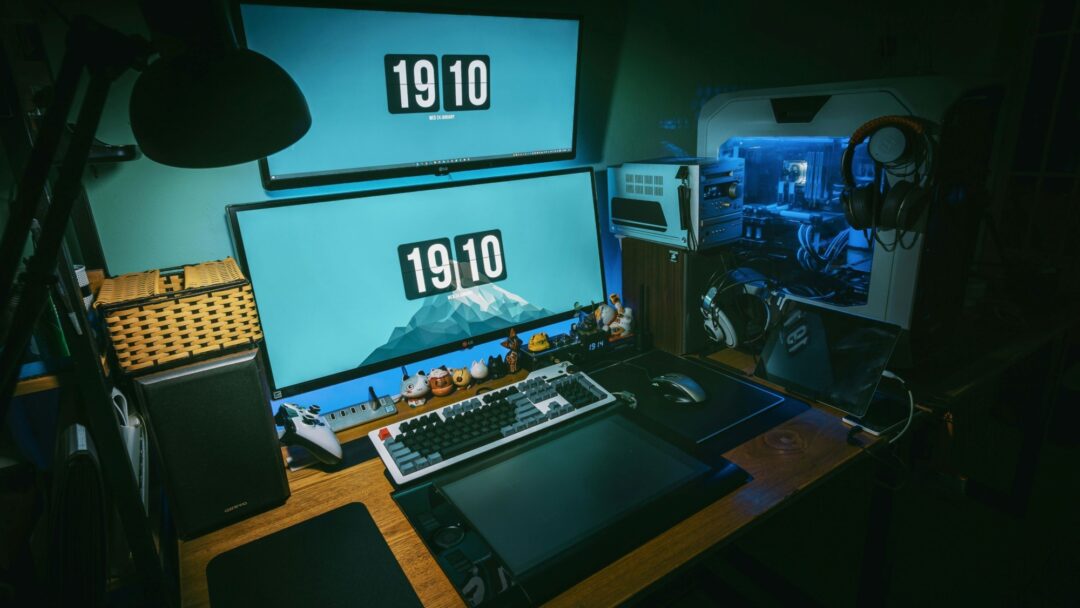Audio
Anna Wright - Bindi Maps (Part 1)
Ablequest by
2RPH3 seasons
14 mins
Part 1 of an interview on the voice-activated app, Bindi Maps.

This interview is a repeat of a program originally recorded in 2019 when Bindi Maps, a voice activated app for public indoor spaces, first began. The following fortnight Ablequest interviews the Co-Founder of Bindi Maps Dr Anna Wright about the progress.
Speaker 1 00:03
With information on the latest developments in assistive technology and initiatives. Two RPH brings you ablequest.
Speaker 2 00:18
Hello, I'm Barbara Sullivan. Finding your way around an unfamiliar building, for example, a large shopping centre or airport, can be complicated. It's even more of a challenge if you have a visual impairment. But imagine if you had a voice activated app which could help in these indoor spaces. Well, Dr. Anna Wright has developed an app based navigation system which employs beacon technology so users can find services within internal spaces like public buildings. Anna Wright is the founder and CEO of Bindimaps. Her company uses a network of beacons and Wi Fi, plus the voice of the phone's digital assistant, to help people locate themselves indoors. This new technology is currently being trialled at the University of Technology in Sydney, where Anna is senior lecturer in accounting, researching and teaching in the areas of innovation and valuation. The idea was sparked more than 20 years ago when Dr. Wright was diagnosed with a degenerative eye condition. It got her thinking about how she would navigate her way around unknown spaces. Elaine Johntech managed to catch Anna on her mobile phone between lectures at UTS.
Speaker 1 01:32
You were a business school lecturer at the University of Technology with expertise in accounting, research and business, and you've helped many businesses. But can you tell us how you developed the idea of an indoor navigation system? And is that going to benefit other people that don't have visual impairment?
Speaker 3 01:51
So the idea from Cindy mats came from my own experience and my own frustration with navigating difficult internal spaces, especially if I was to go blind, which was a diagnosis that I've had about my own eyesight. So Bindi Maps has been optimised for people with vision impairment. It works in voiceover mode. Having said that, even though we have developed it specifically for people with vision impairment, whenever we have used it at a conference or something like that, we've found that there are plenty of people who are visually able who also use the app, because often at those conferences, nobody knows where anything is. So we have had that feedback, and yes, later down the track, we will be developing it for everybody. But for now, it's just for people with vision impairment.
Speaker 1 02:38
So can you explain how it works?
Speaker 3 02:41
Sure. It's a mobile smartphone app that's developed for Apple iOS and it works in voiceover mode. So what we do is that when you come into one of our bindimaps buildings, you're first given an overview of the space, so you can create your own mind map of what's around you. We've got a list of searchable destinations, and then we give you point by point and fairly detailed information about the space as you're travelling through it to get to your particular destination. We've also marked any hazard warnings, especially for overhead things, that sort of thing that would be of concern to people with vision impairment. We've done all of our development in conjunction with guide dogs and people at Vision Australia, very generously, have helped us with a lot of the design work.
Speaker 1 03:34
Where do you see it has the most potential? Would it be shopping centres, universities, airports?
Speaker 3 03:40
All of the above? We're at the process of that. The app has been live in the App Store now for five weeks, and in that five weeks, we've already had huge customer uptake, so that's the buildings themselves. We're about to do a large launch with Stockholm shopping centre out at Weatherall park. The shopping centre is definitely a good fit for us. We're working with a number of universities because, again, they are very busy, complicated internal spaces. We're also talking to airports. We have got installations already at a couple of hotels and also in some office buildings, and we're also looking at hospitals. So basically anywhere, really. We've got a call out on our website that if people do have buildings that they'd like to have mapped to, nominate them on our website, and we will do our best to talk to those building owners to have bendy maps installed.
Speaker 1 04:33
So I understand that there's a trial working at the UTs at the moment. Can you tell us about that?
Speaker 3 04:39
Yeah, there certainly is a trial at UTS and we're still working with this university to extend that trial across more buildings. But in the meantime, we're post trial and commercially installed. As I said, probably the biggest one that we have at the moment is Stockland Weatherall park.
Speaker 1 04:57
What are the benefits for this map? Could you take us through a bit of a story of how it would sort of empower people with visual impairment to navigate the world.
Speaker 3 05:06
What bindimats does do is allow somebody to use the phone and their cane or their guide dog, and they will be able to independently find a venue that they want to go to. So with all of our testing, that's been some constant feedback is that people don't like to go to a brand new shopping centre because they don't know their way around. And if they were to go to a brand new shopping centre, they would take a friend or a colleague with them. With thinking apps, they won't need to. They'll be able to independently travel to their different shops that they want to go to with the help of the app.
Speaker 1 05:39
So is it a bit like when you're out in a car and you say, take me to the nearest shopping centre, it will actually do it indoors, and you say, take me to Woolworths or Coles?
Speaker 3 05:51
Yep, absolutely. It's just like Google maps on the outside. And it also does have a map function as part of the app. If you do have some vision or if you're visually able, you can just use the map function rather than having the descriptive overlap.
Speaker 1 06:08
Can you tell us a little bit about your experience at the university and what happened to you and how this has all come about?
Speaker 3 06:15
Well, I was diagnosed quite a long time ago now with a very rare form of a retinal generation, which is very similar to macular degeneration, but not the same thing, but it gives you a similar effect. And back when I was diagnosed, the only treatment option was laser. And so I've had a lot of laser done in my right eye and I effectively can't see anything out of my right eye now. But when I was diagnosed, even though it was a very rare condition, I was even rarer or luckier in that I only had it in one eye. All of my surgeons were quite amazed because they were that for every other case that they have completed, it was in both eyes. So I was told it was a question of when, not if my other eye would go and they would have to start lasering it as well. I've just been enormously lucky and I'm very grateful that it hasn't happened. I've still only got the condition in my right eye and my left eye remained fairly stable.
Speaker 1 07:20
That's when you got the idea to develop this technology.
Speaker 3 07:24
It was the idea that being able to navigate independently in indoor spaces was going to be really difficult. So I knew that I could still. With a lot of the assistive technology with screen readers, I knew that I would still be able to do my job, but I just wasn't sure how I was going to be able to get around. Taking public transport, landing in Central Station, then being able to navigate Central Station to make my way to university, to then find my lecture theatre that I would be giving my lecture in.
Speaker 1 07:56
Would have been, this technology is available in other places, or is this brown graking technology in Australia?
Speaker 3 08:03
This is pretty new. There's nobody else doing what we're doing in Australia. Some people have used what we'd call point to point beacons, but ours is a little bit more like Google Maps, in that we use trilateration, so we know exactly where you are. In space, we're accurate to around about 50 centimetres. So we do know where the phone is in space, and that really helps with navigating people around one of these complicated indoor areas.
Speaker 1 08:32
Your students must see you as a bit of a role model.
Speaker 3 08:37
I would like to think so. I teach now just in innovations and I've actually just taking a bit of time away from one of my classes. And students in general love the whole startup culture and that idea that anyone can have an idea and do anything. So I think that's really cool. If I can in any way encourage somebody else to take a chance and do something to help the greater good, then go for it.
Speaker 1 09:04
So the UTs, the University of Technology in Sydney, has supported you getting behind the trial and competitions.
Speaker 3 09:11
Yes, they certainly have. They've been wonderful. So they were our very first pilot site. And as I said, we're now working with all of their various different committees to try and get this rolled out across campus. I don't have any time frames around that, but of course, we'd like to talk to all universities in Australia, guide dogs that released a report recently saying that. That tertiary education is one of the big determinants for somebody with vision impairment to have full time work. So we would love to see bendy maps across every university and Tafe. We've even been talking to some of the private high schools about installing with them, just to bring education and independence to everybody.
Speaker 1 09:53
So this must be quite rewarding, developing this technology.
Speaker 3 09:56
It's fantastic. No idea. So we installed it at Weatherall Park, Stockland out there, which was a big, big job. But then we had some run throughs with guide dogs, and some people with vision impairment from Guide dogs came out to test the app and to give us some feedback. And one of the men that came to help us had never been to that shopping centre before. And just to see his face when he realised he could get around on his own without the help of somebody else, he said, and the ONM specialist from Guide Dog said, there's no way that that would have been possible before Bindi mat. We've got a great video on our YouTube channel that somebody going around UTF. And again, that same feeling of being able to give this to somebody is amazing.
Speaker 1 10:45
So a man can go to a shopping centre and even if he's visually impaired, he doesn't have to ask questions.
Speaker 3 10:52
Perfect, really, isn't it? Don't have to ask anyone else for directions. It's all in your phone.
Speaker 1 10:58
So where can we find out more about this?
Speaker 3 11:01
Head to our website. So that's cindymaps.com. There's plenty of resources there. If people would like to get in contact with us, all of our contact details are there. And also if people would like to nominate buildings. Of course, if we could go to a building owner saying, we've just had ten people say that they would like to go to this particular shopping centre, but they can't or they don't feel comfortable doing this because of their vision impairments, then that gives us a really good argument to use with the shopping centre. Same with local hospitals, the same with universities. With just any help or support that we can get, we are very grateful for.
Speaker 1 11:43
So how do people download the app? Is it just like any other app.
Speaker 3 11:46
Just from the App Store? It's free for people to use. It's the building owners that pay the subscription for the app.
Speaker 1 11:54
And does the money go to the University of Technology? If there's any money to be made out of.
Speaker 3 11:59
No, no. Bingimaps is a privately owned business and we have a series of beautiful investors who have put their hard earned cash behind us to do all of the development. So again, very grateful for those that have jumped on board what we're trying to achieve here.
Speaker 1 12:16
What do you think you have to do to convince politicians and businesses to get this going?
Speaker 3 12:22
So with all businesses, they are interested in the financial use case. So that's what I'm saying. If people will let us know that they go to a particular shopping centre or they don't go to a particular shopping centre, if I can show those shopping centres that they are missing out, then that gives them much more of an incentive to put this in. The same with universities, they can see that this is going to either increase their social engagement with the community, or if it's going to get them additional students, then they can start to tick those financial boxes. So that's really where we're going. We have also been talking to different people and different government organisations. Same again, if people want to support us, get on board. Love to hear from anyone who'd like to support. So, as you know, we were down at the Blind Citizens Australia conference getting the word out there and it's just wonderful as we get more and more people that are working as advocates to help spread the word and put a bit of pressure back on businesses. For example, I had a meeting with a very large American company that has equality as one of their core values, but they don't have any staff members who are vision impaired. Well, equality also includes people with different abilities, so we need to make that clear. Back to business.
Speaker 1 13:43
Thank you very much for joining us, Anna. This was an interview with Dr. Anna Wright we recorded in 2019. Listen in to our next ablequest program to hear an update on Bindi maps.
Speaker 2 14:00
You have just been listening to Ablequest, a program that looks at developments in assistive technology and initiatives from Elaine Johntec and Barbara Sullivan Oven. Thank you for listening and goodbye till next program.
Continue listening

Blind Sports Australia CEO Matt Clayton speaks about its work with blind and vision impaired athletes across 21 sports.
Matt Clayton - Blind Sports Australia
Ablequest by 2RPH
5/5/2023
•13 mins
Audio

Vivid, Sydney's celebration of creativity, seen from a disability access focus by its director.
Gill Minervini - Vivid
Ablequest by 2RPH
19/5/2023
•14 mins
Audio

This program discusses dance movement therapy and how it works - featuring Cecilia King of the Dance Therapy Association.
Cecilia King - Dance Therapy
Ablequest by 2RPH
14 mins
Audio

What are the challenges of providing audio description on Oz TV? Hear Lauren Henley, Aust Federation of Disability Organisations.
Lauren Henley - Audio Description
Ablequest by 2RPH
16/6/2023
•14 mins
Audio

In Part 1 of a 2RPH interview, assistive tech expert David Woodbridge explores latest innovations to make everyday life easier.
David Woodbridge - Tech Update Part 1
Ablequest by 2RPH
30/6/2023
•14 mins
Audio

Features Robert Duff-Silsby of Luddi, Perth company developing assistive devices for all people and bodies.
Robert Duff-Silsby - Sexual Wellbeing
Ablequest by 2RPH
13 mins
Audio

In Part 2 of this conversation with 2RPH's Ablequest, expert David Woodbridge reviews latest assistive technologies.
David Woodbridge - Tech Update Part 2
Ablequest by 2RPH
28/7/2023
•14 mins
Audio

Matt Clayton of Blind Sports Australia and the Oz team's Chef de Mission, discusses the forthcoming World Blind Games in the UK.
Matt Clayton - World Blind Games
Ablequest by 2RPH
11/8/2023
•13 mins
Audio

Prof Kim Marriott of the Monash Assistive Technology and Society Centre, talks about the purpose and work of the Centre.
Kim Marriott - Monash Assistive Technology and Society Centre
Ablequest by 2RPH
25/8/2023
•13 mins
Audio

Ablequest features an interview with Serena Ovens, new CEO of Assistive Technology Supplies Australia or "ATSA".
Serena Ovens - Assistive Technology Supplies Australia
Ablequest by 2RPH
14 mins
Audio

Part 1 of an interview on the voice-activated app, Bindi Maps.
Anna Wright - Bindi Maps (Part 1)
Ablequest by 2RPH
14 mins
Audio

This is Part 2 of an interview with Dr Anna Wright, explaining how Bindi Maps works.
Anna Wright - Bindi Maps (Part 2)
Ablequest by 2RPH
14 mins
Audio

Artist Ebony Wightman of disability-led We Are Studios talks about art and challenge.
Ebony Wightman - We Are Studios
Ablequest by 2RPH
20/10/2023
•13 mins
Audio

Prof. Leeanne Carey discusses the SENSe program, her team's world-first therapy to help stroke survivors.
Leeanne Carey - SENSe Therapy
Ablequest by 2RPH
2/11/2023
•13 mins
Audio

Youthworks Accessibility Minister Bec Baines talks of making church accessible to young people with disabilities.
Bec Baines - Youth and Worship
Ablequest by 2RPH
16/11/2023
•14 mins
Audio

Nikki Hind, Australia's first blind fashion designer, discusses her work.
Nikki Hind: Blind Grit
Ablequest by 2RPH
1 December 2023
•14 mins
Audio

Dr Dimity Williams, family GP, recommends spending more time in nature - and a "green hour" each day.
Green Hour: Dr Dimity Williams
Ablequest by 2RPH
5 December 2023
•14 mins
Audio

Imagine sitting in a wheelchair for hours, being unable to move your fingers or arm to do simple things like pick up a glass.
Konstanze Hager - Bateo
Ablequest by 2RPH
Konstanze Hager - Bateo
•14 mins
Audio

Action Audio is a new language being created to transcend sport.
Machar Reid - Action Audio
Ablequest by 2RPH
Machar Reid - Action Audio
•14 mins
Audio

What a difference one person with experience, passion and energy can make to many lives.
Julie Ross-Edwards - Head High
Ablequest by 2RPH
Julie Ross-Edwards - Head High
•14 mins
Audio

Driver educator outlines what's needed for a person with disability to get a driver's licence.
Ronak Shah: on-road driving education
Ablequest by 2RPH
12 January 2024
•14 mins
Audio

Vision Australia's Christo Sarantakis talks of his life, blindness and assistive tech changes.
Christo Sarantakis of Vision Australia
Ablequest by 2RPH
26 January 2024
•14 mins
Audio

Introducing Australia's first pictureless feature film, TOUCH, showing in Sydney.
Majella Knobel: "Touch" - open air movie
Ablequest by 2RPH
9 February 2024
•14 mins
Audio

An expert discusses the use of horticultural therapy for people with disabilities.
Steven Wells: horticultural therapy
Ablequest by 2RPH
23 February 2024
•14 mins
Audio

Features articles on latest blind-assistive tech including a new bus app and smart ear buds.
Assistive tech news catchup
Ablequest by 2RPH
8 March 2024
•14 mins
Audio

Features an innovative hospitality industry training program for people with disabilities.
Saraya O'Connell - Hotel Etico Independence Program
Ablequest by 2RPH
22 March 2024
•14 mins
Audio

Guests discuss the Obi robotic dining assistant for people with upper arm disabilities.
Hugh Kingley and Rachel Dekkar: Obi
Ablequest by 2RPH
19 April 2024
•14 mins
Audio

A spy-themed computer program tackles the mystery of social encounters - outlined by its company's CEO.
Kathleen Davey - Social Science Translated
Ablequest by 2RPH
3 May 2024
•14 mins
Audio

A Sydney organisation delivers creative arts and life skills to people with disabilities.
ChoppA Green - Studio Artes
Ablequest by 2RPH
17 May 2024
•14 mins
Audio

An award-winning Central Coast NSW disability service shares its successful strategies.
Lonestar Makoni - Breaking Barriers Disability Services
Ablequest by 2RPH
31 May 2024
•14 mins
Audio

Part 1 of a conversation with an Australian neuroscience research pioneer about benefits of music in brain injury recovery.
Professor Sarah Wilson (part 1)
Ablequest by 2RPH
14 June 2024
•14 mins
Audio

Part 2 of a conversation with a leading neuroscientist of benefits of music in brain injury recovery.
Professor Sarah Wilson (part 2)
Ablequest by 2RPH
28 June 2024
•14 mins
Audio

A CEO talks about his company's award-winning assistive physical therapy device.
Justin Keenan - LusioMate
Ablequest by 2RPH
12 July 2024
•14 mins
Audio

Information about a program teaching good cyber-security practices to make daily life safer.
Jess Wilson: Be Connected
Ablequest by 2RPH
26 July 2024
•14 mins
Audio

A veteran print disability broadcaster with macular degeneration shares her experiences.
Teresa Plane - 2RPH
Ablequest by 2RPH
9 August 2024
•14 mins
Audio

The founder of a blind-assistive technology company shares latest developments.
Peter Ford - Control Bionics (part 1)
Ablequest by 2RPH
6 September 2024
•14 mins
Audio

Part 2 of an interview with the head of an innovative blind-assistive technology company.
Peter Ford - Control Bionics (part 2)
Ablequest by 2RPH
20 September 2024
•13 mins
Audio

Looks at a project to better inform refugee and migrant women on AI.
Good Things - Jess Wilson
Ablequest by 2RPH
4 October 2024
•14 mins
Audio

An expert with lived experience corrects some widespread misconceptions about stuttering.
Dale Williams - Stuttering Awareness Day
Ablequest by 2RPH
18 October 2024
•14 mins
Audio

An inventor discusses his an innovative cane tip to help people with blindness or low vision.
Peter Rickards - Sensaball
Ablequest by 2RPH
15 November 2024
•13 mins
Audio

Part 1 of an interview with an Australian expert on low-vision-assistive technology, on AI and other developments.
David Woodbridge (part 1)
Ablequest by 2RPH
29/11/2024
•14 mins
Audio

Conclusion of an interview with a leading Australian expert on blind-assistive technology.
David Woodbridge (part 2)
Ablequest by 2RPH
13 December 2024
•14 mins
Audio

Looks at the leading stroke treatment work of the Royal Rehabilitation Hospital, Ryde NSW.
Jason Redhead and Graham Cooper of Royal Rehab Ryde
Ablequest by 2RPH
10 January 2025
•14 mins
Audio

An innovative social media platform aims to address isolation and loneliness in the disability community.
Steve Bear - Alvie
Ablequest by 2RPH
7 February 2025
•12 mins
Audio

Australia's largest provider of Auslan sign services outlines its important work.
Brett Casey - Deaf Connect
Ablequest by 2RPH
21 February 2025
•14 mins
Audio

Looks at an Australian organisation's work at helping men seek help and build self-awareness.
Tommy Herschell - Find Ya Feet
Ablequest by 2RPH
7 March 2025
•14 mins
Audio

A speech pathoplogist discusses her work with young people's complex communication needs.
Denise West - Scope
Ablequest by 2RPH
21 March 2025
•14 mins
Audio

A vision-impaired disability rights advocate talks of her work and learning podcast skills.
Freya Wolf
Ablequest by 2RPH
4 April 2025
•14 mins
Audio

A leading Australian eye researcher talks of his team's work in creating new hope for people with retinal damage.
Raymond Wong - Centre for Eye Research Australia
Ablequest by 2RPH
18 April 2025
•14 mins
Audio

A wheelchair-using business owner, facilitator and car rally driver shares experiences and insights.
Mel Harrison - Sitting Low, Reaching High
Ablequest by 2RPH
2 May 2025
•13 mins
Audio

Disability Pride Month in July promotes awareness about people with disability and also celebrates individuals with disability.
Hannah Solomons - Sydney Disability Pride
Ablequest by 2RPH
Hannah Solomons - Sydney Disability Pride
•14 mins
Audio

Deb Roach is a three-time pole dancing world champion yet she has only one arm.
Deb Roach
Ablequest by 2RPH
Deb Roach
•13 mins
Audio

Being in nature is good for you whether it is being in the garden or walking along the beach.
Kayte Kitchen - Admirari Nature Therapy
Ablequest by 2RPH
Kayte Kitchen - Admirari Nature Therapy
•14 mins
Audio

Music can evoke emotions that bring back memories and the same is true for people living with dementia.
Zara Thompson - Music Therapy
Ablequest by 2RPH
Zara Thompson - Music Therapy
•14 mins
Audio

Laura Boccanfuso is founder and CEO of Van Robotics, a social robotics company based in South Carolina in the United States.
Laura Boccanfuso - Van Robotics
Ablequest by 2RPH
Laura Boccanfuso - Van Robotics
•14 mins
Audio

Two years ago Maggie O'Connell, in her mid 20's never had a full time job.
Maggie O'Connell - AFP
Ablequest by 2RPH
Maggie O'Connell - AFP
•14 mins
Audio

Julie Ross-Edwards, founder of Head High Disability Services, returns to Ablequest to speak more about Head High's philosophy and special approach.
Head High (Update)
Ablequest by 2RPH
Head High (Update)
•13 mins
Audio

David Woodbridge, an expert in assistive technology for people with no or low vision, is a regular guest on Ablequest.
David Woodbridge
Ablequest by 2RPH
David Woodbridge
•14 mins
Audio

Pete Horsley is the Founder of Remarkable, a global start up and initiative of the Cerebral Palsy Alliance.
Pete Horsley - Remarkable Disability Tech Summit
Ablequest by 2RPH
Pete Horsley - Remarkable Disability Tech Summit
•14 mins
Audio